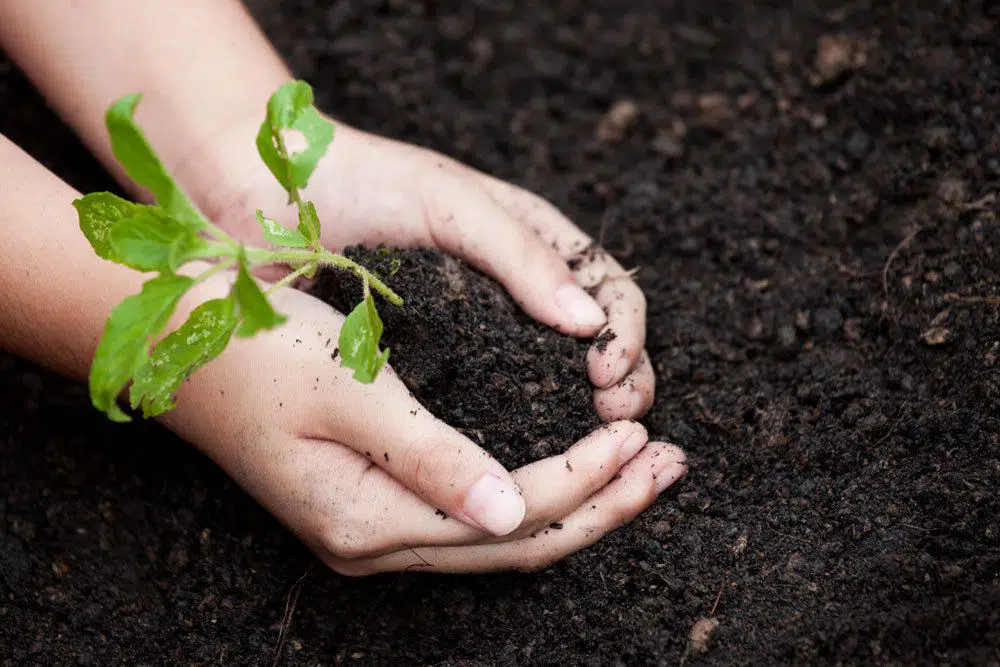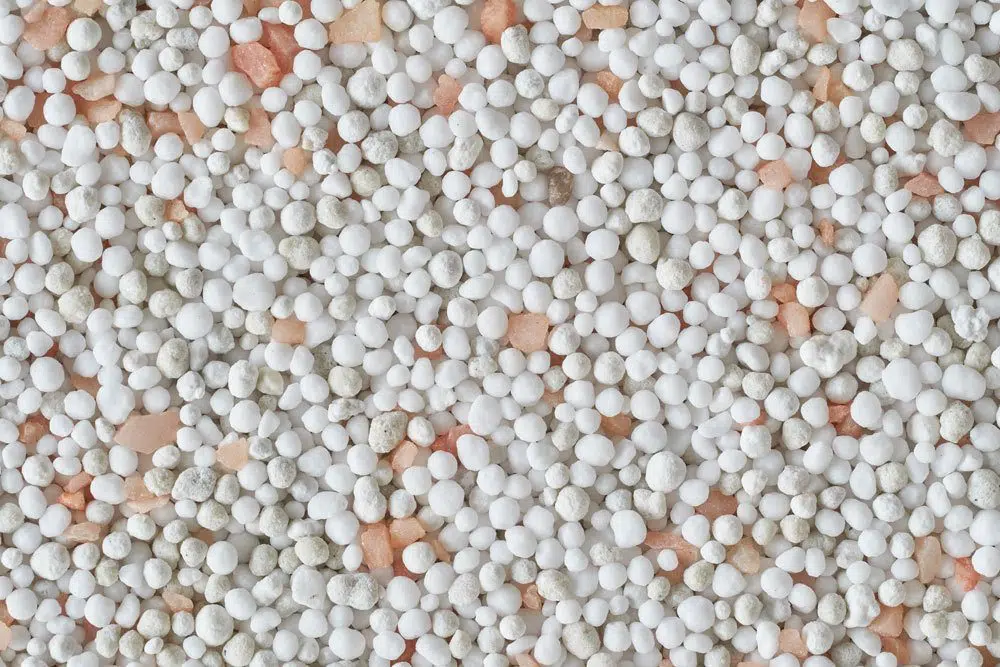NPK fertilizer, also known as complete fertilizer, belongs to the complex fertilizers and has different ingredients that can vary in composition from plant species to plant species. Thus, when used correctly, it works effectively for garden or houseplants and in the greenhouse.
Contents
Composition
NPK fertilizers are special fertilizers, the concept of which appeared in 1927 by the European chemical company BASF SE from Ludwigshafen am Rhein with the product Nitrophoska. The aim of these fertilizers was to provide the necessary core nutrients for plants in a concentrate that was easy to administer. The three main ingredients of NPK fertilizers not only define the composition, but also gave the fertilizer its name. These are those listed below.
Nitrogen (N)
Nitrogen is one of the most important substances of all for plants of all kinds, as it is essential for the metabolism and growth of plants. Nitrogen enables basic processes within the plant, such as the formation of shoots, leaves and flowers, and is equally important for the general vitality of the plants. The following problems occur when there is not enough nitrogen.
- no sufficient chlorophyll formation possible
- pale plant parts and metabolic problems as a result
- impaired formation of vital vitamins and proteins
- stunted growth is possible
- only sparse formation of side shoots and sprouts
- vegetative and generative plant parts are usually formed smaller
- yellowish discoloration of the leaves
- if the deficiency is too high, the leaves dry out and are lost
- low fruit formation and poor fruit quality leads to crop loss
- if the deficiency is not corrected, the plant may die.
But with all fertilizers, it is important to remember that the amount needed for the particular plant species should not be too low or too high.
Too much nitrogen will cause the following complications:
- too fast growth
- thin leaves and shoots
- weak growth

Phosphorus (P)
Phosphorus, compared to nitrogen, is required for the formation of strong roots, fruits and flowers and can be limited in this process by too much nitrogen. In addition, phosphorus drives photosynthesis, which is vital for all plants. Another advantage of the substance is its beneficial effect on winter and frost hardiness. Plants that need a lot of phosphorus, such as fir trees, can easily survive the winter thanks to the substance. Phosphorus is also used for germination, as the substance provides the necessary energy for this purpose. In the case of a phosphorus deficiency, the following symptoms occur.
- Ripening of fruits is slowed down, sometimes completely limited
- Fruits are formed only sparsely
- roots grow weak, brittle or not deep enough
- the whole growth is delayed
- also has a negative effect on fruit quality
- leaf edges turn blue, green, blue-green, red, red-purple
- discoloration later spreads to the entire leaf
Too much phosphorus in mineral fertilizers causes chlorosis, a plant disease that limits or completely stops the use and formation of chlorophyll.
Potassium (K)
Potassium is the third substance in the bunch and is essential for water uptake and water balance, as well as resistance to diseases, fungi and viruses. In addition, potassium promotes the vitality of plant parts and resistance to extreme weather conditions such as drought and permafrost.
A potassium deficiency is immediately manifested by the following symptoms:
- Fruits, buds and flowers become weaker in formation
- plant parts appear flabby because the cell walls are not strong enough
- fewer roots are formed
- leaf edges turn brownish
- leaf edges and tips appear burnt
- less water is absorbed
However, increased dosage of potassium can also lead to the following problems.
Substrate salinized
Minerals such as magnesium can no longer be absorbed
Together, these three substances make up the so-called NPK value, which is listed on the packaging of the NPK fertilizer. The NPK value indicates the mixing ratio of the ingredients, i.e. the fertilizer composition. The amount of the contained substance is indicated in three numbers, each of which represents the percentage of nutrients in the total mixture.
Two examples:
- NPK fertilizer for green plants: 14-8-20 (composition of 14% N, 8% P, 20% K).
- NPK fertilizer for flowering plants: 7-8-6 (composition of 7 % N, 8 % P, 6 % K).
As you can see, green plants generally need more potassium and nitrogen, while flowering plants need sufficient phosphorus. In addition to these substances, there are other nutrients that the plant needs for numerous processes.
- Calcium
- Magnesium
- Sulfur
Trace elements, including zinc, iron, copper and numerous other nutrients.
The more specialized the fertilizer is for a plant species, the different the compositions can be. However, the additional nutrients are rarely recorded in their direct amount.

They are produced in the following forms:
liquid: mostly used for home use, especially indoor and potted plants
solid (granules in various sizes): mostly used for gardens and larger areas, has long-term effect
Of course, the fertilizers among themselves can be used for any form of husbandry, only in the case of solid fertilizers should choose the right granule size.
In addition, NPK fertilizers are offered in three variants:
- mineral
- mineral-organic
- organic
Accordingly, depending on the type of plant, attention should also be paid to this point, because not every plant tolerates organic or mineral fertilizers.
Please note: Depending on the manufacturer, the individual numbers may be interchanged. Although an NKP fertilizer is the same as an NPK fertilizer, you should pay attention to the order in which the respective substances are listed so that you do not accidentally confuse the potassium content with the phosphorus content.
Application
In application, NPK fertilizers prove to be extremely uncomplicated, as they are available in ready-made form and do not have to be mixed yourself. When using them, there are only a few points to pay attention to in order to achieve the optimum fertilizing performance.

To do this, proceed as follows:
- Time: Fertilize once in spring in preparation for the vegetation phase.
- in the case of NPK slow-release fertilizers, the fertilizer is usually added once in mid-summer
- in the case of conventional fertilizers, fertilize according to the needs of the plant or the manufacturer’s instructions.
- last fertilization at the beginning of July, so that the new shoots can sprout and do not freeze over the winter
- when fertilizing, follow the manufacturer’s instructions in terms of quantity
- alternatively, read fertilizer instructions for the respective plant species
- liquid fertilizer is administered via the watering water
- Distribute NPK lawn fertilizer with a spreader, as this makes distribution more uniform
- Weigh granules before distribution
- this will prevent over- or under-fertilization
- the granules are distributed in the soil around the plant
- you can easily start at the base of the stem
- however, do not damage the roots close to the surface
- if the soil is dry, water the plant immediately after applying the fertilizer
- on rainy days this step is not necessary
Tip: If you have roses, hibiscus, hydrangeas or summer lilacs, you can fertilize them with a calcium-based fertilizer (potash fertilizer) even later than July. This strengthens the winter hardiness of the plants and is particularly effective for these plants.
When applying it, you should avoid the following mistakes:
- Never apply the fertilizer to the leaves, flowers or root system.
- this will lead to over-acidification and potential death of the affected areas
- avoid days when the sun shines particularly strongly
- here, due to the sun’s rays, acidification could also occur
- also the soil should never be bone dry
- do not overfertilize; especially important with mineral-based fertilizers
Advantages
NPK fertilizer is one of the simplest and most effective fertilizer options thanks to its ingredients and availability.
The following advantages can be mentioned:
- Basic supply is covered
- fruit yields increase visibly
- more and healthier flowers are formed
- plants can use the fertilizer immediately
- it does not have to be transformed by microorganisms or otherwise
- easy to apply
- nutrients are optimally adapted to the needs of the plants
- also works as a long-term fertilizer
Disadvantages
The advantages outweigh, but clear disadvantages present themselves, which are noticeable with the use of NPK fertilizers.
- usually more expensive to purchase
- significantly more energy is needed for production, which can have a negative impact on the environment
- chance of overfertilization quite high


